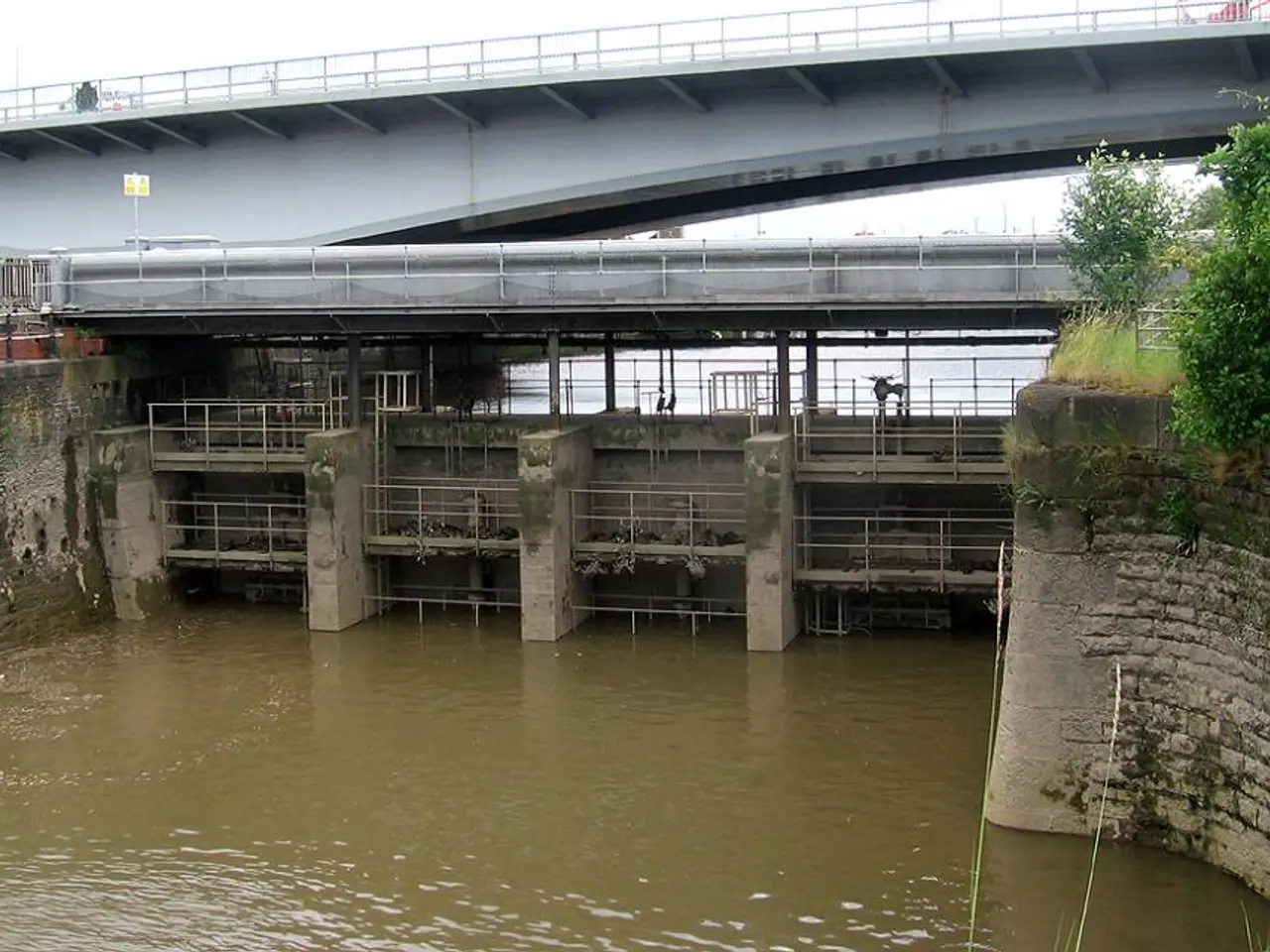Thailand's Dams Near Capacity: Authorities Act to Mitigate Flood Risks
Heavy rainfall in Thailand has filled the Bhumibol, Sirikit, and Kwae Noi dams to near capacity, with water levels in the Ping and Nan river basins pushing them over 90%. Authorities are taking swift action to manage the situation and minimise impact.
The National Water Resources Office is diverting water from both sides of the Chao Phraya River via the Tha Chin, Noi, and Pasak rivers to Ayutthaya. This strategic move aims to reduce the water flow towards Bangkok and its vicinity. Despite these efforts, some areas outside flood barriers in Nonthaburi and Pathum Thani may experience slight impacts during high tides.
The Sirikit Dam is releasing an additional 25 million cubic metres of water daily, while the Bhumibol Dam is releasing 5 million cubic metres per day. This controlled release sends about 2,800-2,900 cubic metres per second towards the Chao Phraya Dam. These measures help prevent overflow and mitigate flood risks.
In Ayutthaya, the flood situation remains severe. Eleven districts, 139 tambons, and 795 villages are flooded, affecting 41,551 households. Tragically, three deaths have been reported. However, the Bhumibol and Sirikit dams still have sufficient capacity to hold water, offering reassurance that a repeat of the 2011 floods is unlikely.
Prime Minister Anutin Charnvirakul has ordered urgent assistance for affected communities and is considering compensation. Bangkok's flood management infrastructure has improved since 2011, with the city now able to withstand water releases of up to 3,500 cubic metres per second. Authorities continue to monitor the situation closely to ensure public safety.
Read also:
- Federal petition from CEI seeking federal intervention against state climate disclosure laws, alleging these laws negatively impact interstate commerce and surpass constitutional boundaries.
- Hydrogen Energy: Sustainable Innovation or Resource Exploitation?
- Dim outlook for a major energy corporation
- Underwater pipeline shutdown initiative by Michigan challenges scope of American foreign policy, contends Trump Justice Department








